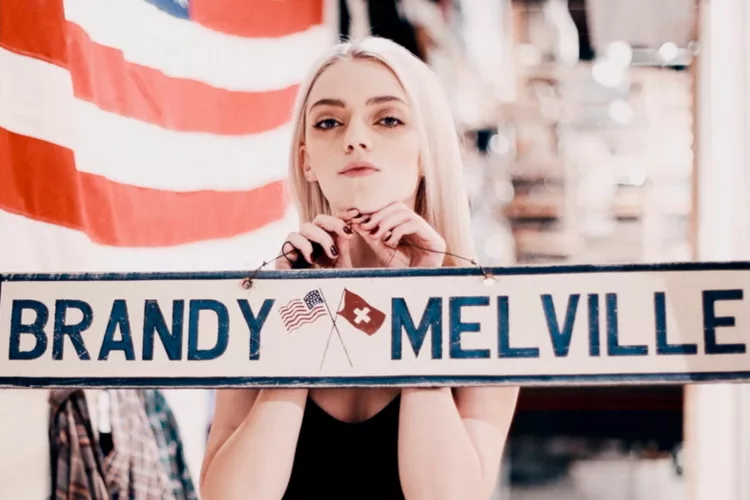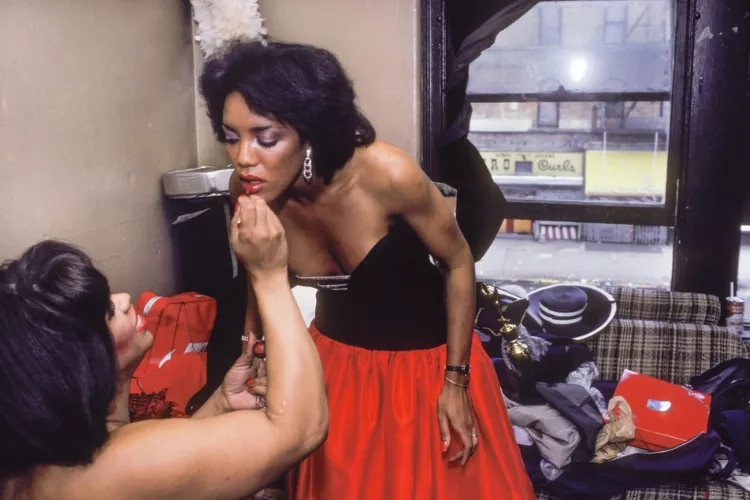While wildfires batter the Canadian countryside, the 2023 Global Fashion Summit aimed to blaze a better trail overseas. From June 27th to June 28th, speakers at the Copenhagen Summit addressed a myriad of climate-related plans, from material science to encouraging less consumerism.
The Summit has historically reflected the tides of change. For example, in 2022 –themed Alliances for a New Era –discussions centered around how EU textiles legislation would be enforced, stressing the need for actual responsibility over rhetoric.
This year, the theme was Ambition to Action and the industry undoubtedly has an uphill climb. That said, as innovations and technology cast light to guide us forward, we can hope for an escalator. We have compiled a few of the Summit’s high points to demonstrate.
Here’s where the forecast is trending:
Eruption: Ganni Gets Materialistic

In the most sustainable sense of the word, that is. Danish cool-girl favorite Ganni used the Copenhagen stage to announce a new partnership with California-based startup Rubi Labs. Founded by twin sisters Leila and Neekha Mashouf, they’ve developed a zero-waste biocatalysis process that creates lyocell yarn derived from the carbon dioxide that comes from manufacturing waste streams. It may sounds like a supervillain’s origin story, but it is actually a way to ensure that clothing is genuinely carbon-neutral.
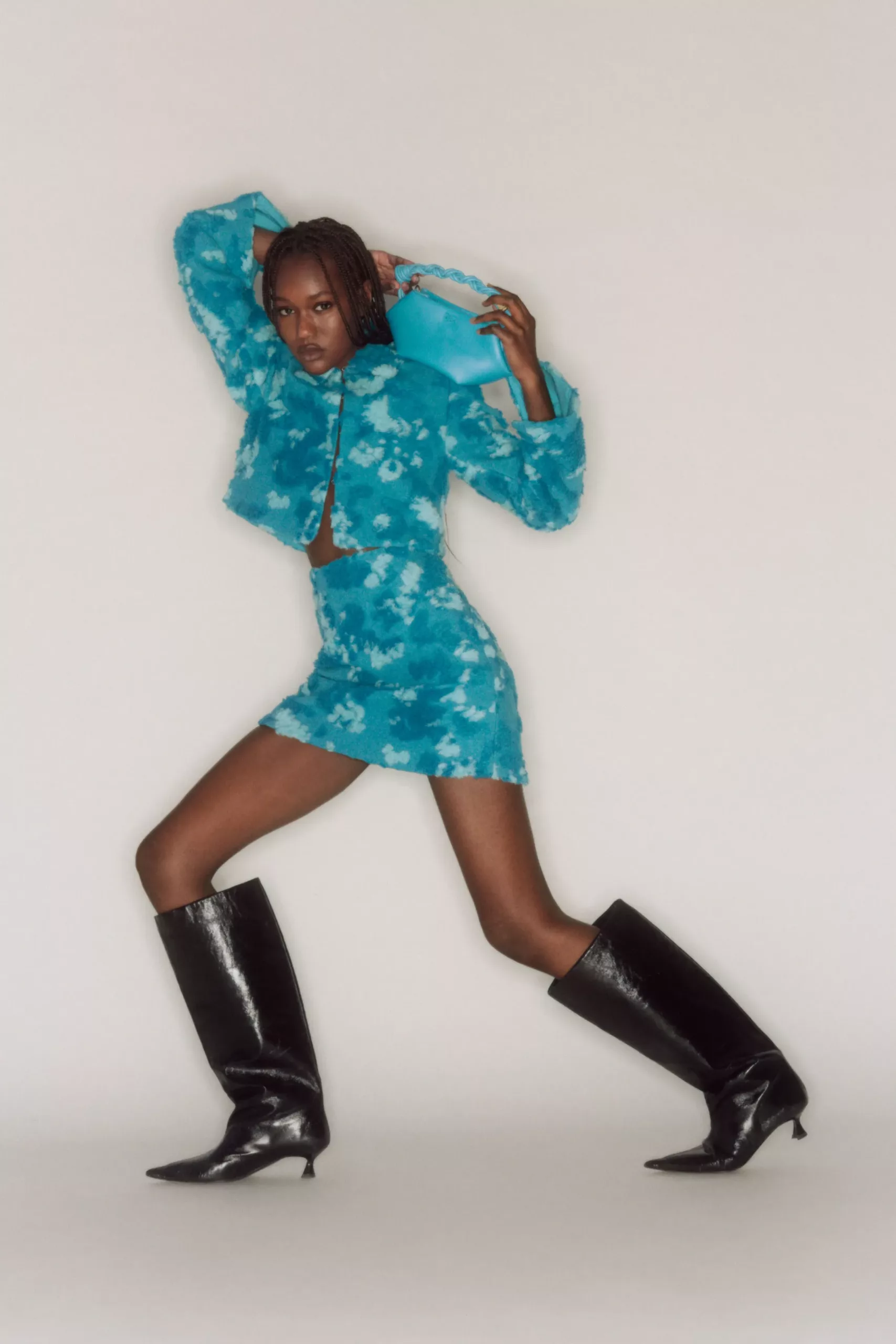
After all, why see the world in black and white when it can stay green? Taking to the Action Stage of the summit, chief executive Nicolaj Reffstrup detailed the company’s progress. Beyond the new partnership, Ganni creates more than 70% of its collection from organic material. They are also collaborating with 30 innovators under the Fabrics of the Future initiative to produce 10% of their line with sustainable fabric by 2025.
It’s all part of the master plan. Rather than jet-setting off to plant trees in a third-world country, Ganni believes in a more direct approach to cutting emissions from their supply chain. Between funding research and being the first company to trial the fabric, Ganni has a vision for a more sustainable future.
Why we care
We appreciate a fashion label directly addressing decarbonization in their supply chain –especially by turning carbon emissions into thread! Ganni also creates more playful garments than most sustainable brands, showing that eco-friendly doesn’t mean boring. Now if only they disclosed more about their labor practices.
Eruption: Fashion torch-bearers SOLIT! and Avatirna
Fashion loves novelty. Accordingly, the Youth Summit was rebranded to the Next Gen Assembly and integrated with this year’s main event. In panels throughout the summit, Next Gen change makers highlighted the need for inclusive, sustainable fashion.
In a bid to please the youth, the winners of the Summit’s Fashion Values challenge reflect the importance of social sustainability. The brief was to demonstrate “How can fashion value society?” A touching reminder of how the older people responsible for climate-related issues continuously rely on younger generations to solve their problems. Still, industry winner SOLIT! and student winner Avatirna more than rose to the occasion for encompassing social growth alongside environmental priorities.
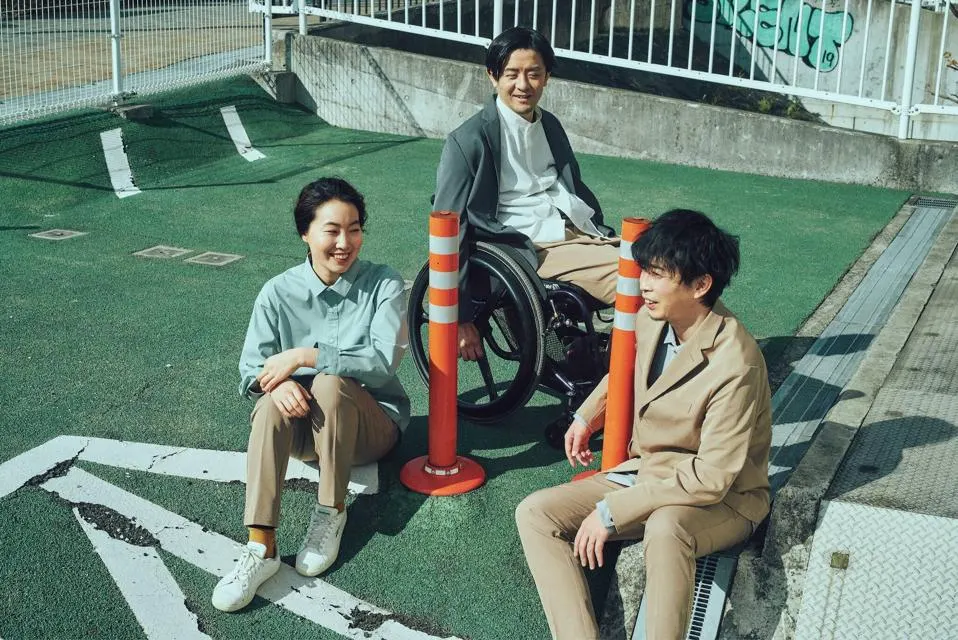
Japanese brand SOLIT! won the top prize for its inclusive design philosophy. A slang term for ‘wonderful,’ SOLIT! aims to create clothing that reflects a society that promotes self-acceptance. The design method calls on people from diverse social backgrounds to collaborate throughout the process and produce only enough to meet demand. The brand customizes clothing according to body shape, measurement and disability requests to create unique fits that suit each individual. As the antithesis to impersonal fast fashion, we are confident this outlook is no candle in the wind.
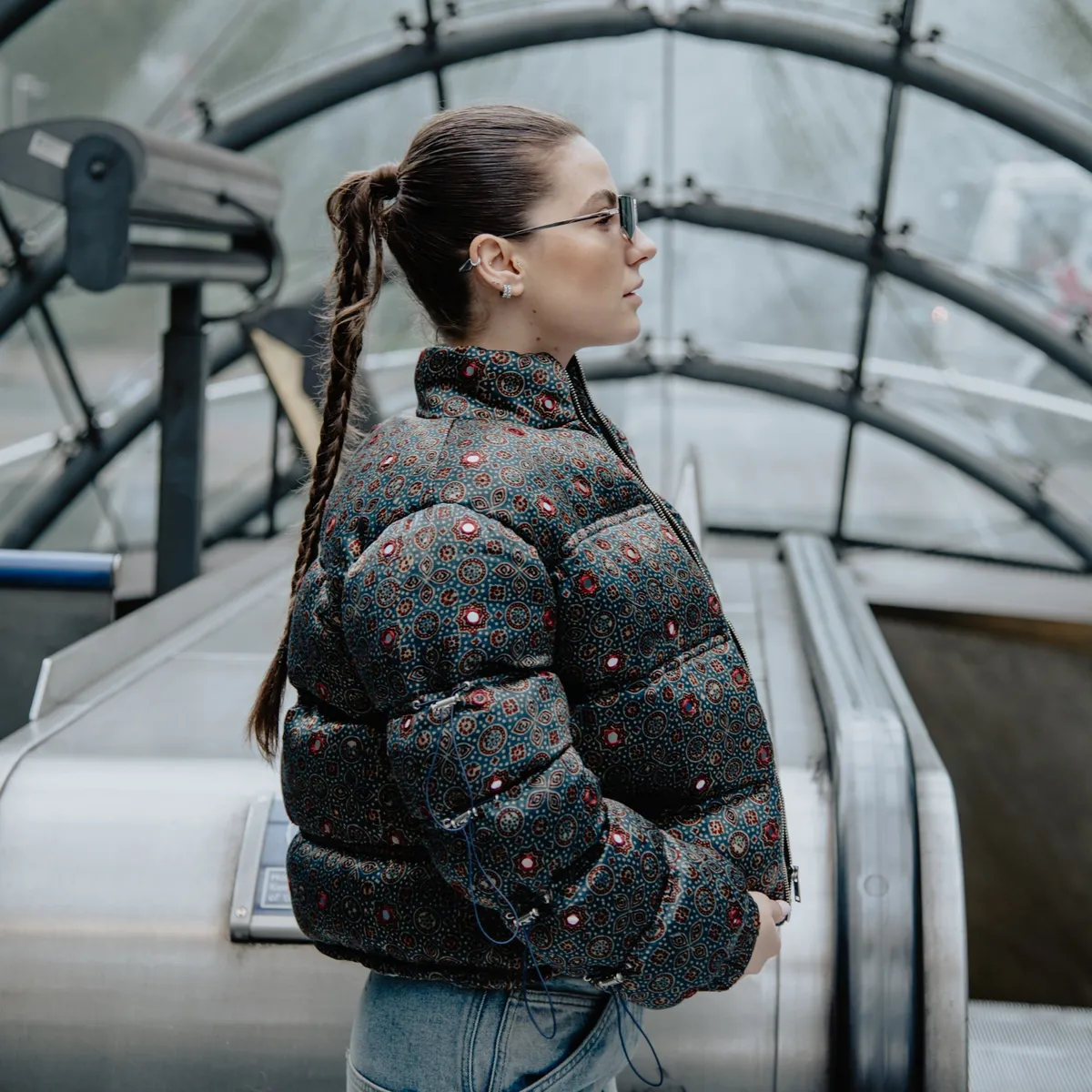
Avatirna was the student winner for bridging the generational divide. In Sanskrit, Avatirna means ‘incarnated,’ a fitting name for a brand in which traditional heritage crafts are reborn. Deeming itself the first Phygital brand (physical + digital), it offers physical garments with an NFT equivalent for your avatar to wear in the metaverse. The new Indian luxury brand wants to foster social connection by making handicrafts accessible to young Indian people. So what are you waiting for? Let’s get digital.
Why we care
Talk about eco-based. The International Labor Organization defines Just Transition as “greening the economy in a way that is as fair and inclusive as possible to everyone concerned, creating decent work opportunities and leaving no one behind.” SOLIT! and Avartirna both epitomize this approach with their humane design philosophies. Wherever these brands go next, we are excited to follow their respective trails.
Eruption: A win for AllBirds
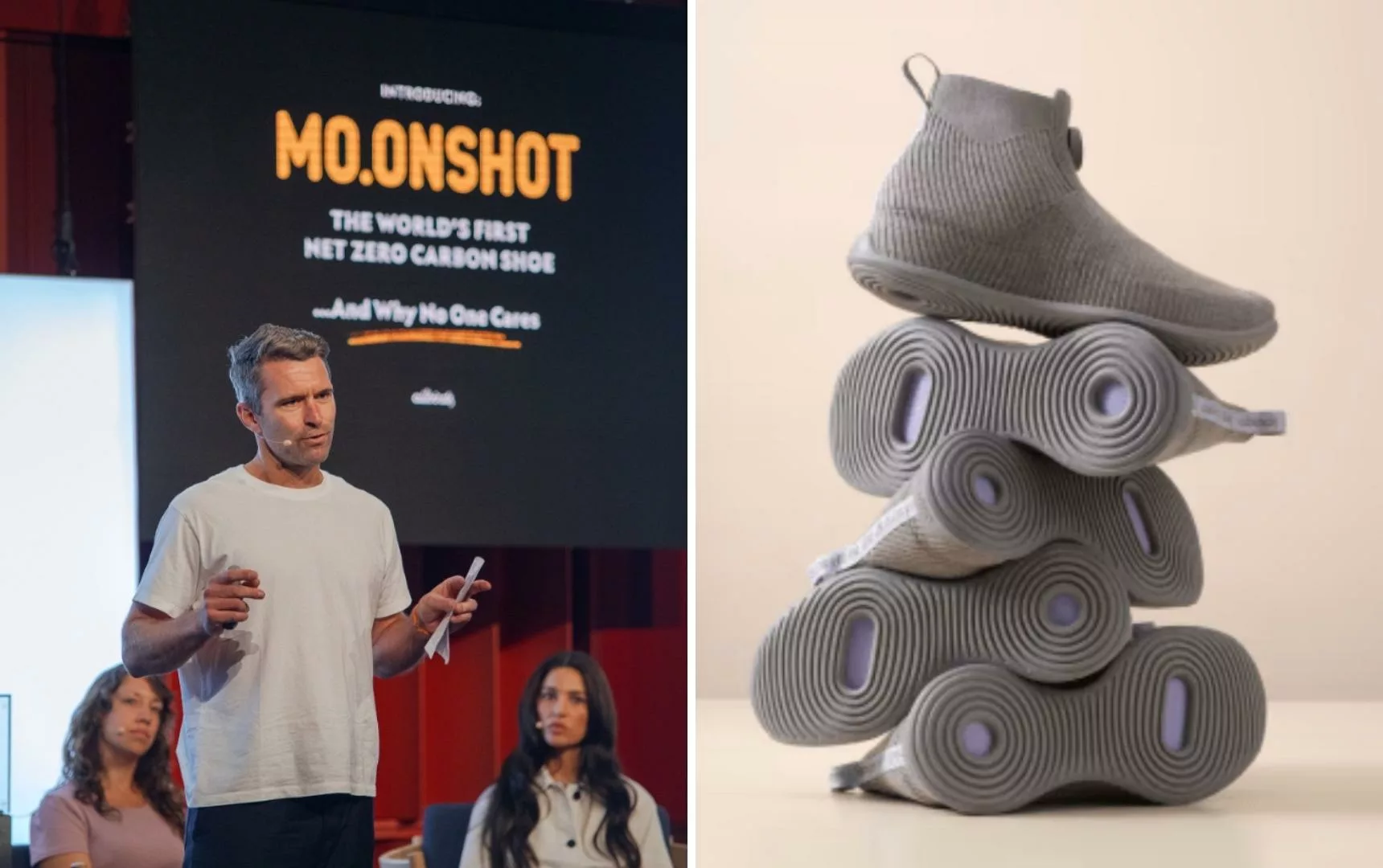
To clarify, while the direct beneficiary of the company’s latest product is humans, ‘allbirds’ will benefit in the long run since they have pioneered the “world’s first net-zero carbon shoe.”
We are all in for this one – prepare for takeoff in the brand’s M0.0NSHOT. With an upper made with carbon-negative regenerative wool, carbon-negative bio-based midsole foam made from sugar cane, and minimalistic components made with methane-capture bioplastic, you can now take a leap of sartorial faith that the planet will be okay.
One small step for humanity, one giant leap for the footwear industry? allbirds recognizes that collaboration is essential to defying the gravitational status quo. At the conference, the brand distributed a toolkit detailing its production process because “unlike the space ‘race,’ this is a relay – we’re all on the same side.”
Why we care
Even as the planet grows warmer, we really can’t afford to be in another Cold War –especially in fashion. That’s why it’s encouraging to see allbirds leading the charge on the collaborative front. While the battle for industry change is ongoing, the ‘Recipe B0.0k’ for net-zero design exemplifies future possibilities for sustainable design, progressing beyond rhetoric to widespread reform. Plus, admit it, sneakers made with methane-eating bacteria are pretty cool.
Disruption: Three Acts in Play
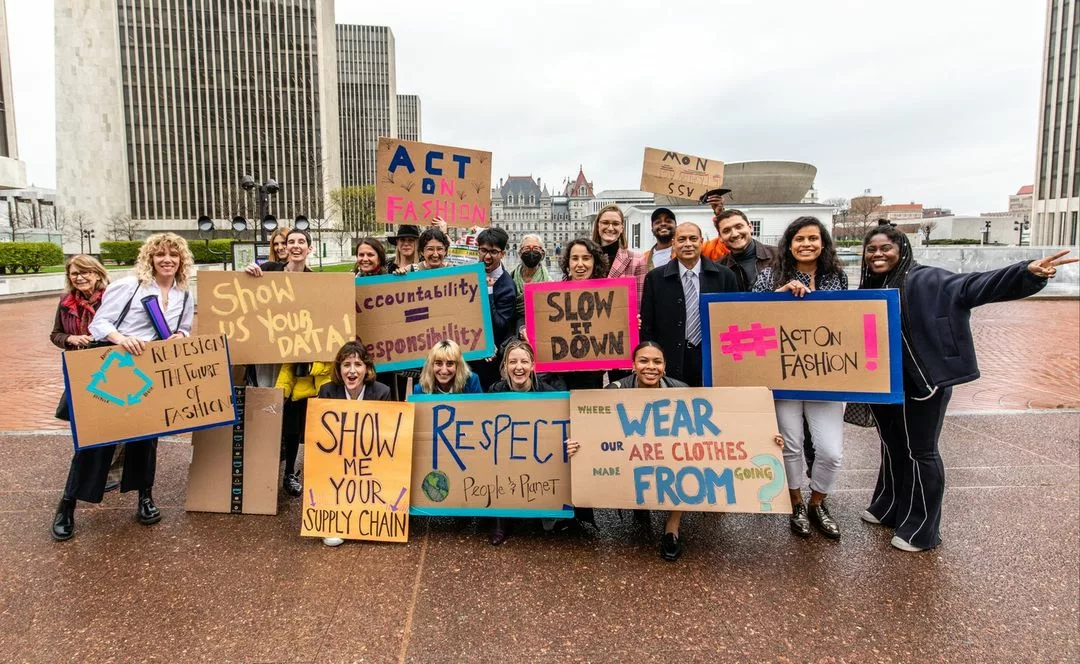
They’re finally getting their act(s) together. At the Summit, New York Assemblywoman Anna Kelley touted the Fashion Sustainability and Social Accountability Act to improve sustainability in line with worker rights. The Act would require companies to identify and publish their negative impacts on environmental and human rights, set targets, report greenhouse gas protocols and track success to attain their targets. From there, companies would have to get in line or pay up 2% of their gross profit. Thanks to reforms, employees can also directly lodge complaints against employers for lost wages. The government and labor unions stitched together this process; many major brands still need to take up the needle.
This creation isn’t the only legislative item racking up attention, either. Other items on the legislative table include the Fashion Workers Act. This law was passed by the NY State Senate and passed on by the Assembly. This Act would regulate companies that employ people in creative roles, such as models and make-up artists, to ensure the employees are paid on time and aren’t exploited. It would also set new guidelines for harassment. Like the Fashion Values Challenge, this measure would keep social sustainability from being brushed under the catwalk.
Although legislation has been introduced in other states and the EU, everyone is watching what happens in New York. The fate of the landmark FABRIC act to improve fashion labor relations sits anxiously front row. Will the laws come off the rack or languish on the sidelines? Lawmakers are optimistic that although the measures failed to be passed during the most recent session, they will be in the spotlight next year. “Every worker in New York, no matter the industry, deserves protection,” said New York State Senator Brad Hoylman-Sigal. These Acts seem promising, like the glimpse of a dress made from a new material. But they have yet to be tried on.
Why we care
Given that the fashion industry produces up to 10% of greenhouse gas emissions and has questionable labor practices, we think it’s past time that it is monitored domestically. Unlike the more complicated brand visions, cutting down abuses should not be difficult. After all, there’s nothing avant-garde about paying your workers a living wage. Although global change is essential – other Summit highlights included the Global Fashion Agenda’s creation of a policy database – we encourage readers to stay aware of more regional changes. We should hold our lawmakers accountable for ensuring greater social and environmental sustainability. Moreover, while the Acts will be a good start, given that only 15% of brands report on all of their production process and we’re on target to miss the standards set by the Paris Climate Agreement, a two percent fine is frustratingly insufficient. Still, it’s one stitch closer to an acceptable garment.
Disruption: Green is the new black
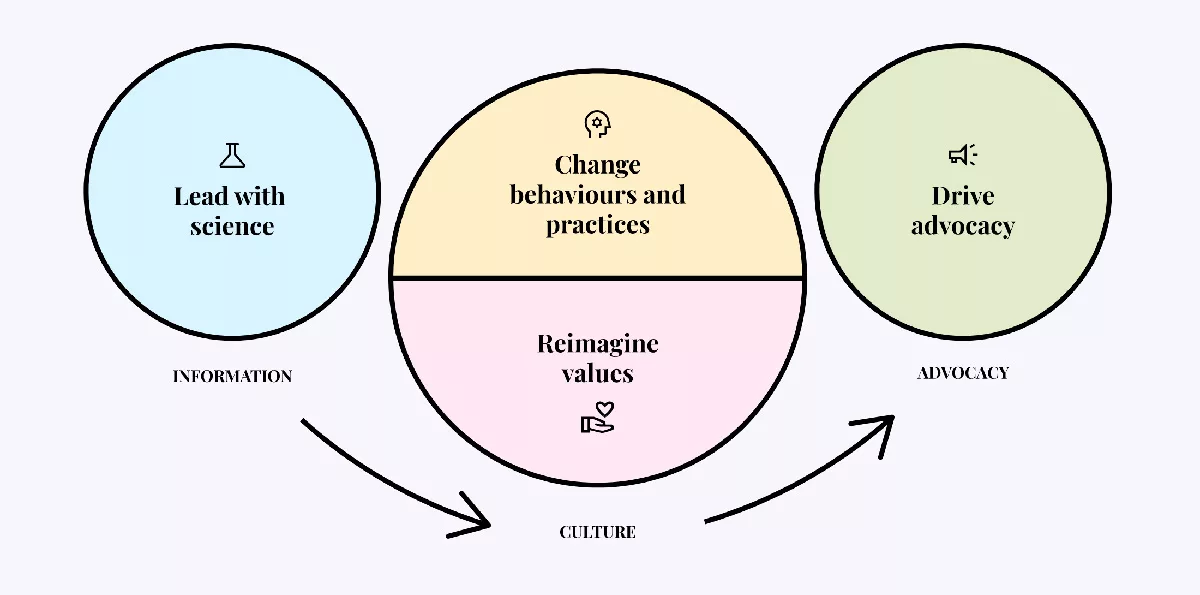
The planet may be ill, but we don’t have to act like it’s a funeral. The United Nations Environment Program and U. N. Climate Change released the second edition of their Sustainable Fashion Communication Playbook, a guide to discussing climate-fashion relations with a positive spin.
Other literature-based contributions include a traceability playbook with case studies from brands like Asics and Coach and a guide developed by 17 global businesses for brands hoping to integrate science-based targets for nature (SBTN).
The brands have spoken, and the verdict is in. For Summer 2023, the language of climate accountability is a hot topic.
Why we care
In all seriousness, staying optimistic in our barren and smog-filled landscape is crucial. Brands need ways to communicate sustainability developments without contributing more to the atmosphere of doom. Language can also change the narratives of over-consumption and keep greenwashing in check. Because let’s face it – the fashion industry’s messaging is long overdue for a rewrite.
–Jayna Rohslau
Related Articles
Copenhagen Cool Girl Brand Ganni + Sustainability
The Anti-Capitalist Book of Fashion
Exploitation, endocrine disruption + endless landfills: Why I’ve stopped buying new
How Commoning Can Help Fashion’s Climate Impact

